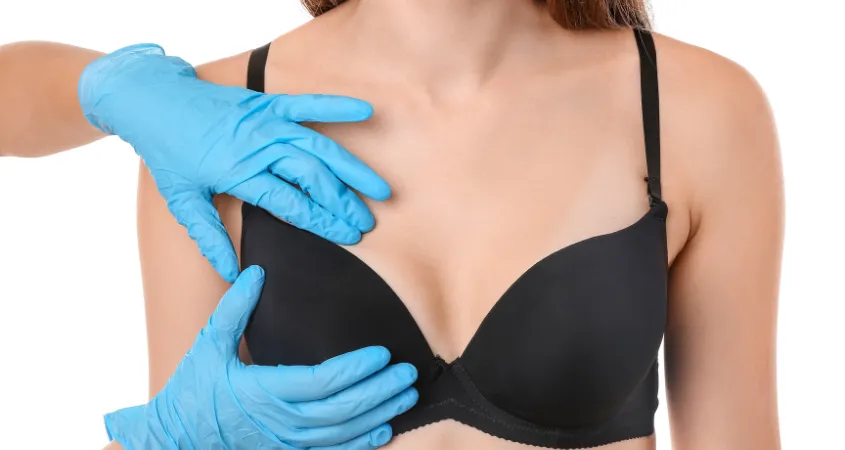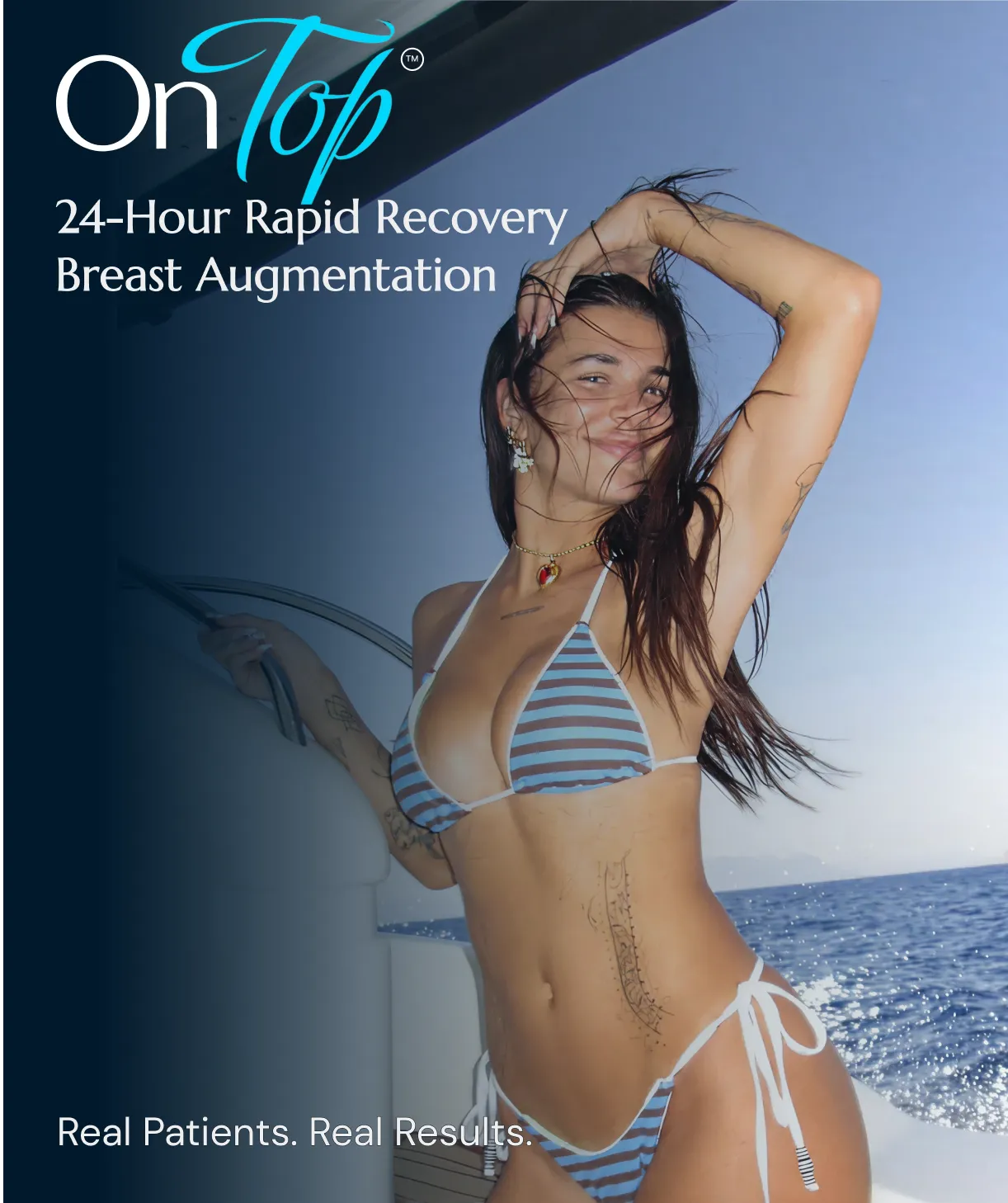Breast Augmentation Recovery Week by Week: Traditional Ways and Newest Technologies
By Partington Plastic Surgery on February 21, 2024 in Breast Augmentation

Week 1: Immediate Post-Surgery Recovery
Optimal healing and decreased risk of complications is achieved during breast augmentation recovery week by week. Patients are advised to rest and limit their physical activity. To prevent edema and provide enough support for the newly expanded breasts, it is essential to wear a supportive surgical bra.
To further reduce inflammation and improve discomfort, cold compresses are often recommended. To facilitate a faster recovery, post-operative care has recently adopted cutting-edge technologies.
Low-level laser therapy and lymphatic drainage massage can both hasten recovery and reduce the chance of complications. Patients should follow the recovery plan that their surgeon has provided, take proper care, and attend follow-up appointments so that any complications can be promptly identified and treated.
Day 1-2: Post-Surgery Care and Rest
Rest, limiting physical activity, and taking prescribed drugs to manage pain and prevent infection are typical suggestions. The thoracic region may experience constriction, edema, and ecchymosis in patients; these are normal reactions that should gradually go away. A useful way to reduce edema and provide some relief is to use cold compresses on occasion.
Recovery and stabilization of the breast implants can also be achieved by adhering to the surgeon’s prescription to use a supportive surgical bra. Patients should avoid sleeping on their side or in a prone posture during this critical period of healing to reduce pressure on the breast area. They should instead lie down on their backs with cushions to help support them.
Encouragement of the body’s healing processes requires a balanced diet and adequate water intake. The post-operative instructions must be closely followed and rest must be prioritized if you want to have a complete recovery in the initial days following breast augmentation surgery.
Managing Pain and Discomfort
Achieving the best possible outcome for patients requires managing their pain and suffering during the healing process. Effective pain management strategies use prescription analgesics. It is possible to reduce discomfort and accelerate healing by employing non-pharmacological methods including massaging, applying cold compresses, and getting enough sleep.

The need to follow post-operative care instructions, attend follow-up consultations, and closely monitor for any indicators of complications must be explained to patients post op, by plastic surgeons and other medical professionals. Patients can recover more quickly after breast augmentation procedures when a comprehensive pain management plan is put into place, which will eventually increase the procedure’s overall success.
Week 2: Transitioning to Normal Activities
Usually, patients begin to gradually resume their regular activities during the second week of recovery following breast augmentation. At this point in the healing process, there is a significant shift in the range of motion as the initial discomfort and inflammation start to subside. Walking slowly is a good example of a low-intensity physical activity that can improve blood flow and accelerate the healing process.
It is best for patients to refrain from strenuous exercise and lifting large things to reduce the possibility of putting too much pressure on the surgical sites. To ensure that any signs of infection or atypical symptoms are promptly addressed, both the patient and the surgeon must monitor the healing process closely.
Reducing Swelling and Bruising
There are multiple phases to the recovery process following breast augmentation, to reduce bruising and swelling for the patient and the best possible healing outcome. After breast augmentation surgery, swelling and bruising are common aftereffects of tissue stress and the body’s inflammatory response.
Applying cold compresses during the first 48 hours following surgery is an efficient way to minimize these side effects. This lessens the accumulation of fluid and helps to constrict blood arteries. In order to prevent fluid buildup in the breast area, patients are also advised to sleep with their upper bodies in an elevated posture.
Additionally, compression garments designed especially for the aftermath of surgery can provide support and lessen edema. To successfully manage pain and minimize inflammation, medical professionals usually recommend a certain course of painkillers and anti-inflammatory medications.

In addition to their known roles in coagulation and tissue regeneration, vitamins C and K, which are abundant in a well-rounded diet, may also help reduce bruises. To track the healing process and modify treatment plans as needed, routine postoperative checkups with the surgical team are crucial.
Innovative Approaches to Minimize Bruising
Significant bruising has historically been linked to the recovery phase following breast augmentation, which can be uncomfortable for patients and offer management challenges for medical practitioners. However, a new approach to lessen this common postoperative complication has been introduced by advancements in medical technologies and techniques in recent times.
Modern hemostatic medications that increase blood clotting efficiency and the employment of advanced surgical instruments that reduce tissue injury are the two main contributors to these developments. Moreover, more accurate incisions and implant placement are made possible by the use of precision-guided imaging in surgical procedures, which reduces unnecessary bleeding.
According to empirical studies, these methods not only lessen the intensity of bruises but also hasten the healing process and improve patient satisfaction in general. Plastic surgeons and medical researchers who are dedicated to enhancing patient care and postoperative outcomes in breast augmentation procedures can take heart from these advancements.
Week 3: Monitoring Healing Progress
To achieve the greatest outcomes, patients and medical professionals should closely monitor and evaluate the healing process during the third week following breast augmentation surgery. The bruises and swelling should have significantly decreased by now, however some effects might still be felt for some time.
Patients are usually encouraged to begin light physical activities gradually; however, strenuous workouts should be avoided since they may impede the healing process. It is imperative to keep a close eye out for any signs of concern, like unusual redness, increased discomfort, or leakage from the incision sites.
Having regular appointments with the plastic surgeon allows for a competent assessment of the patient’s recovery and timely action when necessary. The likelihood of a full recovery is increased when prescribed care instructions are followed, such as donning compression garments and refraining from certain movements.
This stage is critical to guarantee that the implants effectively integrate into their final place, improving the patient’s long-term satisfaction and overall aesthetic result of breast implant.
Signs of Healing and What to Expect
Breast augmentation recovery is a complicated process that requires careful monitoring and understanding of the healing signals to get the best outcomes. Patients may expect to experience swelling, bruising, and discomfort in the early postoperative period as these are common reactions to surgical trauma. These are usually the first symptoms to go away over the first week when the body starts to mend itself.
During this period, patients should strictly adhere to their surgeon’s postoperative care instructions, which include obtaining enough rest, using compression garments, and avoiding strenuous activity. There is a transitional period in the coming weeks, when the incisions begin to mature and the majority of the swelling goes down, making the scars less noticeable.

By the end of the first month, patients often make significant progress, although it may take many months to achieve full healing and desired results. Scheduling follow-up sessions with medical professionals is essential for tracking progress and promptly resolving any problems.
Acquiring an understanding of these stages and signals of the healing process can greatly enhance patient preparedness and promote a smoother recuperation.
Managing Emotional Well-Being
Breast augmentation recovery involves both physical and mental development, therefore it requires careful attention to support total health. As they adjust to their new body image, patients may feel a range of emotions, including anxiety, hopelessness, and shifting self-esteem.
Medical professionals like plastic surgeons need to provide comprehensive care that addresses the mental and physical aspects of recovery. Effective strategies include counseling before surgery, postoperative direction, and ongoing emotional support.
By promoting open communication, setting reasonable expectations, and providing mental health resources, healthcare professionals can significantly enhance their patients’ overall recovery experience and stimulate both physical and emotional healing.
Week 4: Gradual Increase in Activity
Patients may expect a gradual increase in activity during the fourth week of recovery following a breast augmentation, which is a crucial phase in the healing process. By now, most would have had a significant reduction in edema and pain following surgery, allowing them to move from mild exercises to more strenuous physical activity.
Adhering to the specific directions provided by the plastic surgeon is imperative to guarantee a secure and efficient recuperation. Exercises that have a low effect on the cardiovascular system and simple household chores can improve blood flow and speed up the healing process without overtaxing the body.
Medical professionals stress how important it is to pay special attention to your body’s signals and avoid physically demanding activities or carrying heavy things that can jeopardize the outcome of the surgical procedure. Having regular postoperative appointments with the surgeon ensures that any issues can be promptly addressed and progress is tracked toward the best possible recovery.
Natural Look
Confident Beauty
24 Hour Rapid Recovery, Muscle Sparing.

Traditional Exercise Guidelines
Patients can begin adding traditional activities back into their routines under the guidance of plastic surgeons during the fourth week of recovery following breast augmentation. It is imperative to engage in low-impact cardiovascular workouts, such as stationary cycling or brisk walking, as these promote heart health and help sustain physical fitness without placing undue strain on the healing breast tissue.
Furthermore, regaining muscle strength and definition can be facilitated by including low-intensity weightlifting activities. Nonetheless, in order to avoid any possible problems, it is imperative that proper technique and continuous growth be prioritized. These recommendations aim to reconcile the benefits of physical activity with the requirement to offer patients a safe and effective healing experience.
Newest Technologies in Recovery
Under the guidance of plastic surgeons, patients can begin resuming traditional activities during the fourth week of recovery following breast augmentation. It’s imperative to stick to low-impact cardiovascular workouts like stationary cycling or brisk walking.

These exercises preserve physical fitness and enhance heart health without overstressing the healing breast tissue. Low-intensity weightlifting activities can also help with the recovery of muscle definition and strength.
To reduce the chance of any negative effects, it is imperative to stress proper technique and gradual advancement. These recommendations aim to offer patients a safe and effective healing process while also balancing the benefits of physical activity.
24 Hour Rapid Recovery after Breast Augmentation with Dr. Partington
“24 Hour Rapid Recovery,” a novel method that Dr. Partington created, can significantly reduce the amount of time patients need to recuperate from breast augmentation surgery. In order to minimize damage to the breast tissue and increase the patient’s overall comfort, this strategy relies on combining a variety of precise surgical procedures and post-operative care initiatives.
By using advanced technologies that reduce inflammation and tissue damage, patients can often return to normal activities 24 hours following surgery, which means that recovery times are significantly shorter than with traditional methods.
This accelerated recovery time reduces the duration of immobility and the possibility of side effects, which improves patient satisfaction and outcomes. Because of Dr. Partington’s expertise in this area, patients can benefit greatly from modern surgical advancements that shorten recovery times and improve patient comfort.
Conclusion
Beyond the simple healing of surgical wounds, breast augmentation recovery is a multifaceted and involved experience. The psychological and emotional facets of well-being are also involved. Knowing the different phases of recovery and adhering to individualized medical advice can help patients maximize their healing experience, reduce challenges, and achieve the greatest results.
Expert medical assistance is crucial in this process because it provides patients with both medical expertise and emotional support as they adjust to their new body image. Dr. Partington’s “24-Hour Rapid Recovery” approach is one example of how advancements in surgical techniques can significantly speed up healing, lessen discomfort, and improve overall patient satisfaction.
Adopting a holistic approach that integrates mental health treatment and physical therapy is essential to achieving a successful and fulfilling recovery from breast augmentation.
Return to Overview
